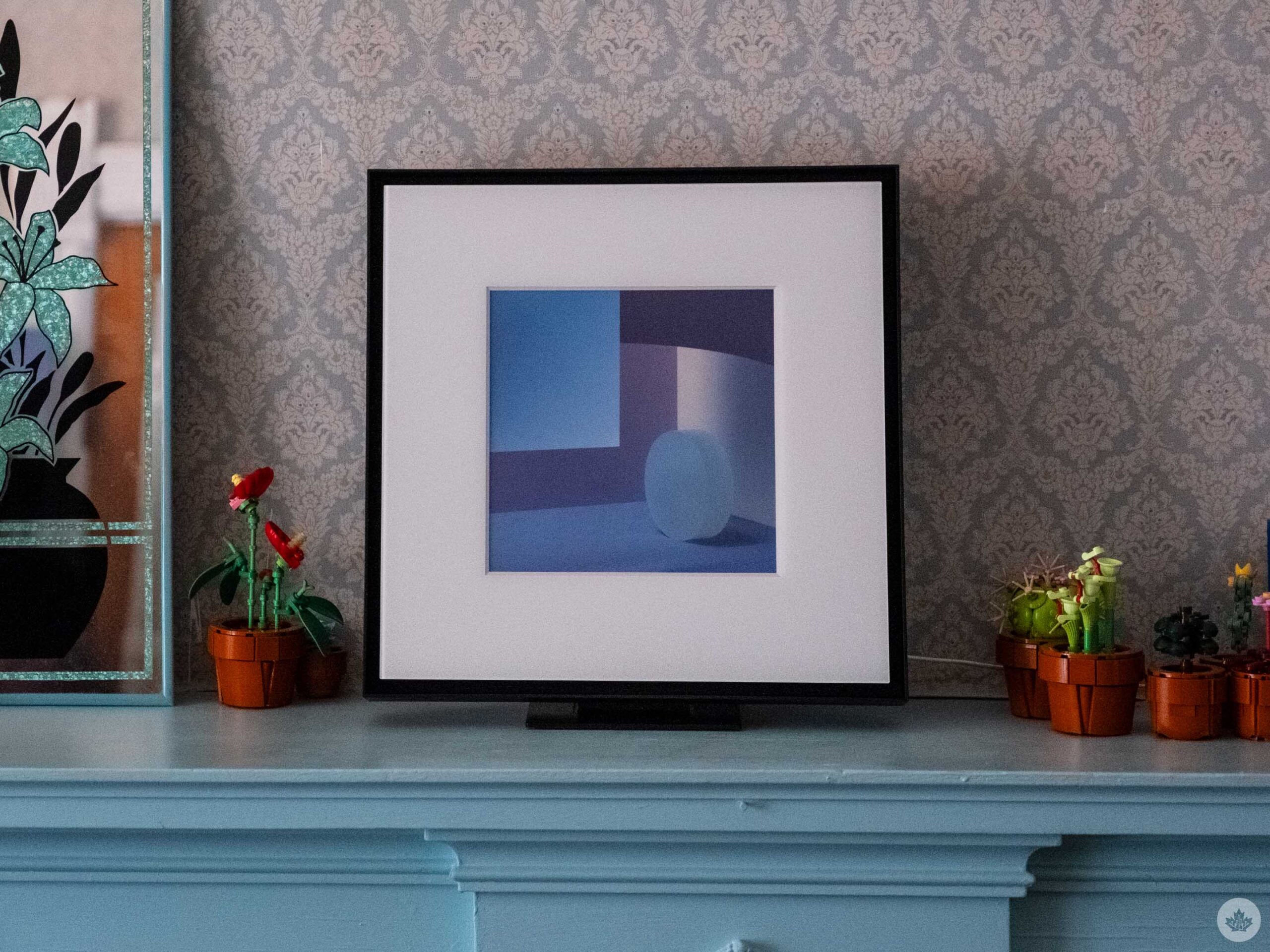Samsung’s Music Frame Speaker is undeniably intriguing. I’ve been waiting years for a speaker to come along and elevate the art/speaker experience Sonos and Ikea ignited a few years ago, but the more time I spend with framed speakers, the more it seems like a fool’s errand.
A month after taking the Music Frame out of its box, there’s little to love. It looks fantastic and sounds better than Ikea’s attempt, but beyond that, it’s considerably more of a hassle than most other smart speakers. If you’re already a Samsung fan who frequently uses the SmartThings app, you might forgive some of the annoyances, but for most, there are better options.
At this point, if you’ve got $600 – $700 yeah, there are some hidden costs) and want a large photo frame to hold an 8×10 photo, don’t read anymore. This speaker is great, and it does act as a photo frame. Do I think that’s worth it for most people? No, but if you really love the look, nothing will give you this same effect for cheaper — and at least at the end of the day, it sounds great.
Framed
I’m a big fan of tech that aims to blend into your home, but at this price point, the Music Frame is pretty ludicrous. I’d be lying if I said that this speaker looked bad, so I won’t hold it against you if you want one. The minimal design is what initially piqued my interest, with the stark white matte and the solid black frame. Admittedly, it’s a little basic, but that’s the point. Some of the units Samsung showed off at CES 2024 featured larger art prints and optional bezels to change the colour of the frame from black to brown or wood-like material. Customization always appeals to me, but for the Music Frame, it comes with some big costs.
There are two types of art you can put in the Music Frame. Smaller photos with a large white border (19x19cm) or larger art prints that take up the full space (33x33cm). As of the time of writing, it seems like Samsung doesn’t sell the smaller prints, but inside the frame, it’s designed to fit a standard 8×10 photo, which you can print out for a few dollars at Staples or your local print shop. Just be wary that only a 7.5-inch square will be visible in the centre once you place it into the frame.
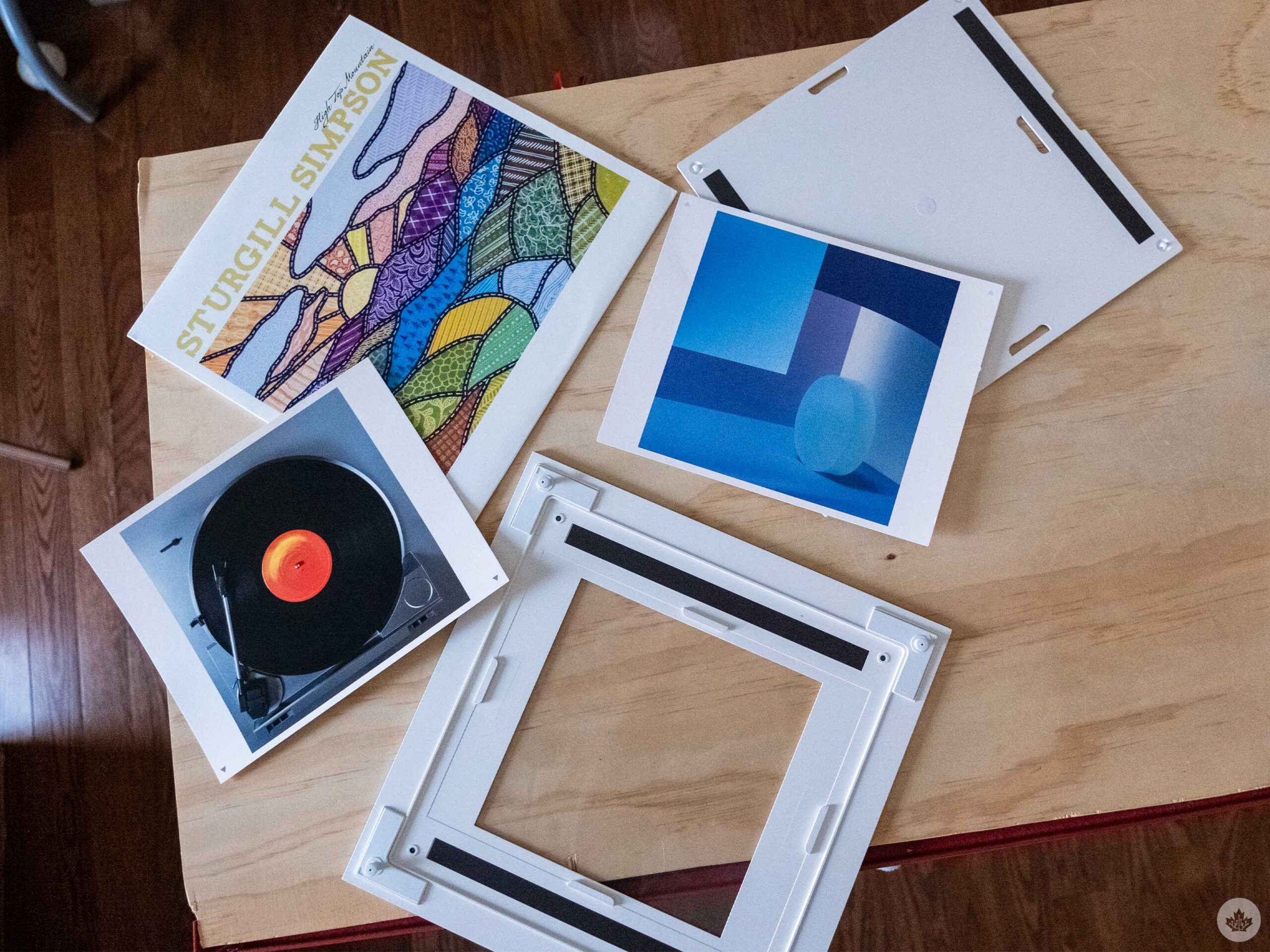
Sadly, vinyl albums are a bit too small to work well as artwork in the Music Frame.
After looking everywhere online, I found a link written a single time on the small scrap of paper that consists of the manual. It takes you to a South Korean version of a website called Marpple. After finding the English site, I discovered that you can print the larger frame prints there. However, they cost $46, and I’m pretty sure that’s USD. Shipping costs another $40, so this already remarkably expensive speaker just went up another $100 once you add in tax.
Also, my unit came with two sets of holder plates for Art Prints, suggesting that the $100 picture you just shipped to yourself is just a print with no mounting hardware.
I’m trying not to be too upset by Samsung’s lack of communication on the size of the photo that fits inside or the pricing of the art prints. Still, it’s just a lot of extra hoops to go through to actually make this speaker gel in your home, and that’s kind of the whole point of the unit. Out of the box, it’s not exactly what’s promised. There should have been a few default small prints included with each unit in varying colours and a free coupon to get a custom art print from Marpple. If people want to spend more money to get other options, that’s on them, but out of the box, at this price, there should be more options than slide-in an 8×10, and hope it’s center-cropped.
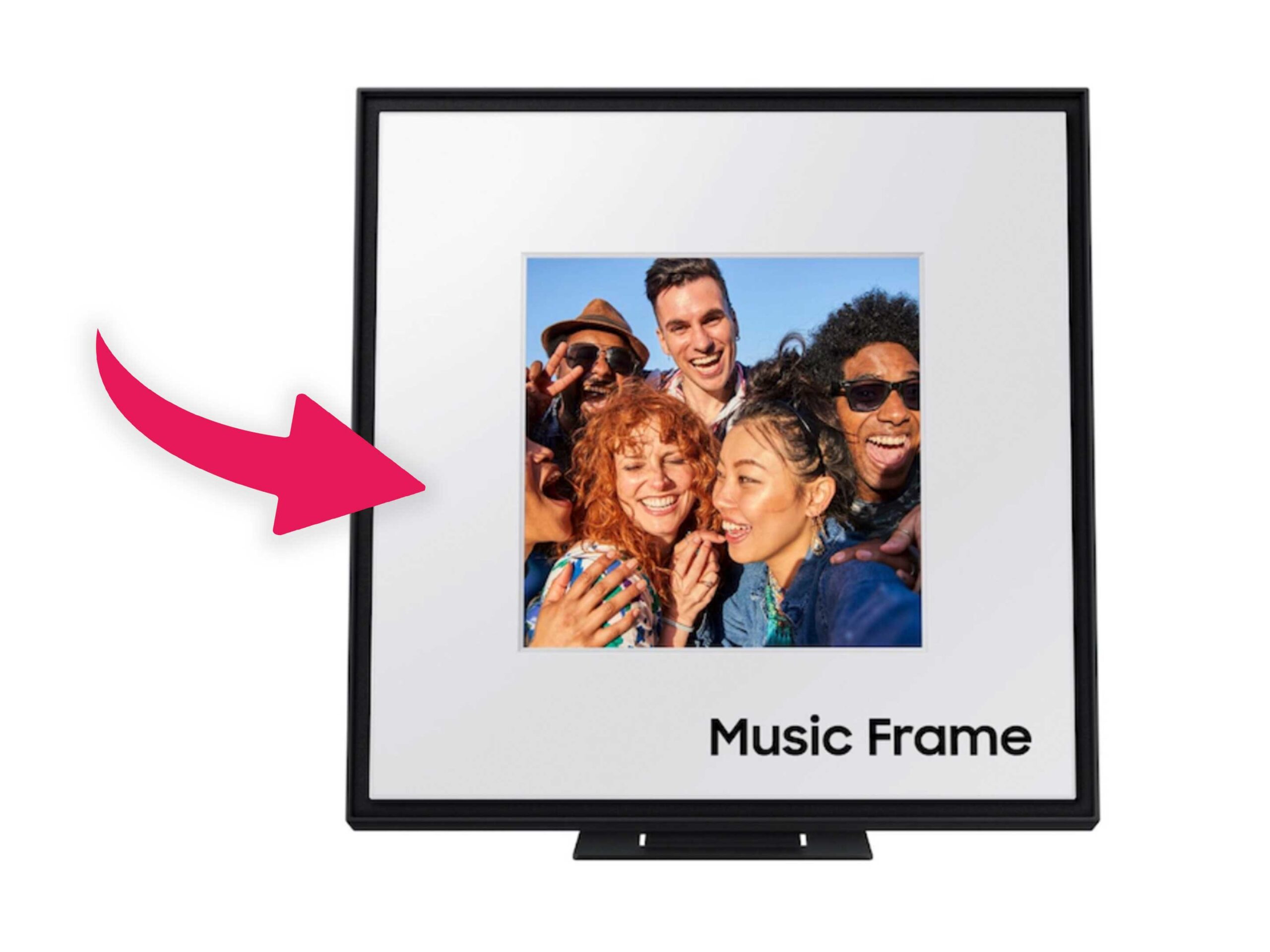
Even Samsung’s marketing images show people getting cropped out of the weird square frame.
I also would have liked more customization options with the white border. The built-in matte covers a majority of the front and dominates the frame. I have art prints 4x the size of the Frame with the same sized matte. A few more options to fit differently-sized photos and aspect ratios would have gone a long way.
There’s wall mounting hardware in the box, but be warned, this speaker has a metal frame, and it’s relatively large, so it’s pretty heavy (9lbs). If you plan to mount it, you’ll need to ensure it’s in a stud or concrete wall. Once the speaker is up on the wall, there will also be a small silver cable dangling down from it. It’s less noticeable than the Ikea/Sonos option, but it’s still a cable dangling down from your speaker. At the end of the silver cable is a large black converter, which feeds into a longer black cable that plugs into the wall.
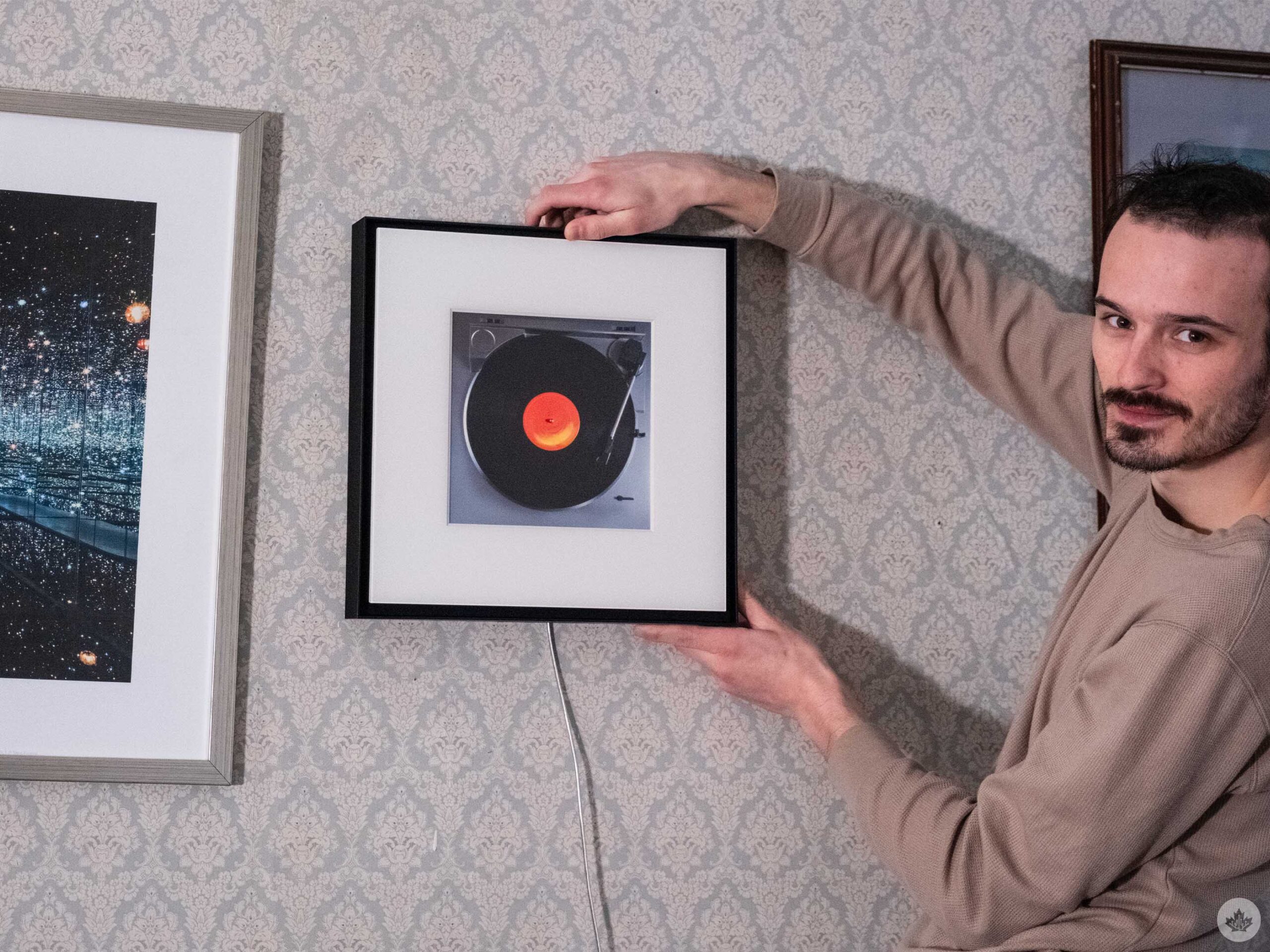 While Samsung has put some effort into minimizing this, it’s going to look awful for anyone not willing to route the cable behind their drywall. You could make it work, but I think you’d want to run the wires in the wall to get the full minimal effect of a musical picture frame.
While Samsung has put some effort into minimizing this, it’s going to look awful for anyone not willing to route the cable behind their drywall. You could make it work, but I think you’d want to run the wires in the wall to get the full minimal effect of a musical picture frame.
During my testing, I kept mine on my living room mantle, which looked commanding above the fireplace. It fit here, but I had to try a few spots since it’s so large. Again, this is all up to personal preference, but what I’m trying to say is that the Music Frame is so large it takes a bit of trial and error to find a spot in your house where it fits in perfectly.
Samsung perks
If you’re already deep in the Samsung ecosystem, the Music Frame has some perks. You can pair it with a 2024 Samsung TV for a surround sound experience with Q-Symphoney. Since that’s basically no one yet, Samsung also allows select versions of its TVs from 2017 and newer to connect to the Music Frame and play sound via Wi-Fi, but that just replaces your television speakers with the Music Frame, which is unlikely to be a great option for most unless you have the Music Frame placed below or above your television.
And, if you have a Samsung phone, you can tap it to the speaker to get music to play over Bluetooth using ‘Tap Sound,’ but the quality over Wi-Fi seems better to me, so it’s not really worth the hassle. I also found triggering it pretty inconsistent, especially compared to Handoff between iPhones and HomePods.
Since it’s a Wi-Fi speaker, it also supports AirPlay 2, Google Cast, Tidal Connect and Spotify Connect. I will mention that AirPlay was also very inconsistent during my review period. There’s also Alexa built-in, and it seemed to understand me fine when I was in the same room as the speaker.
I’m not even sure if I should call this a perk, but for $35 more,you can buy a Samsung Smart Thing hub that plugs into the back of this speaker via USB. It allows you more control and unification across a variety of smart devices like lights, locks, Samsung fridges and other home appliances.
Great sound
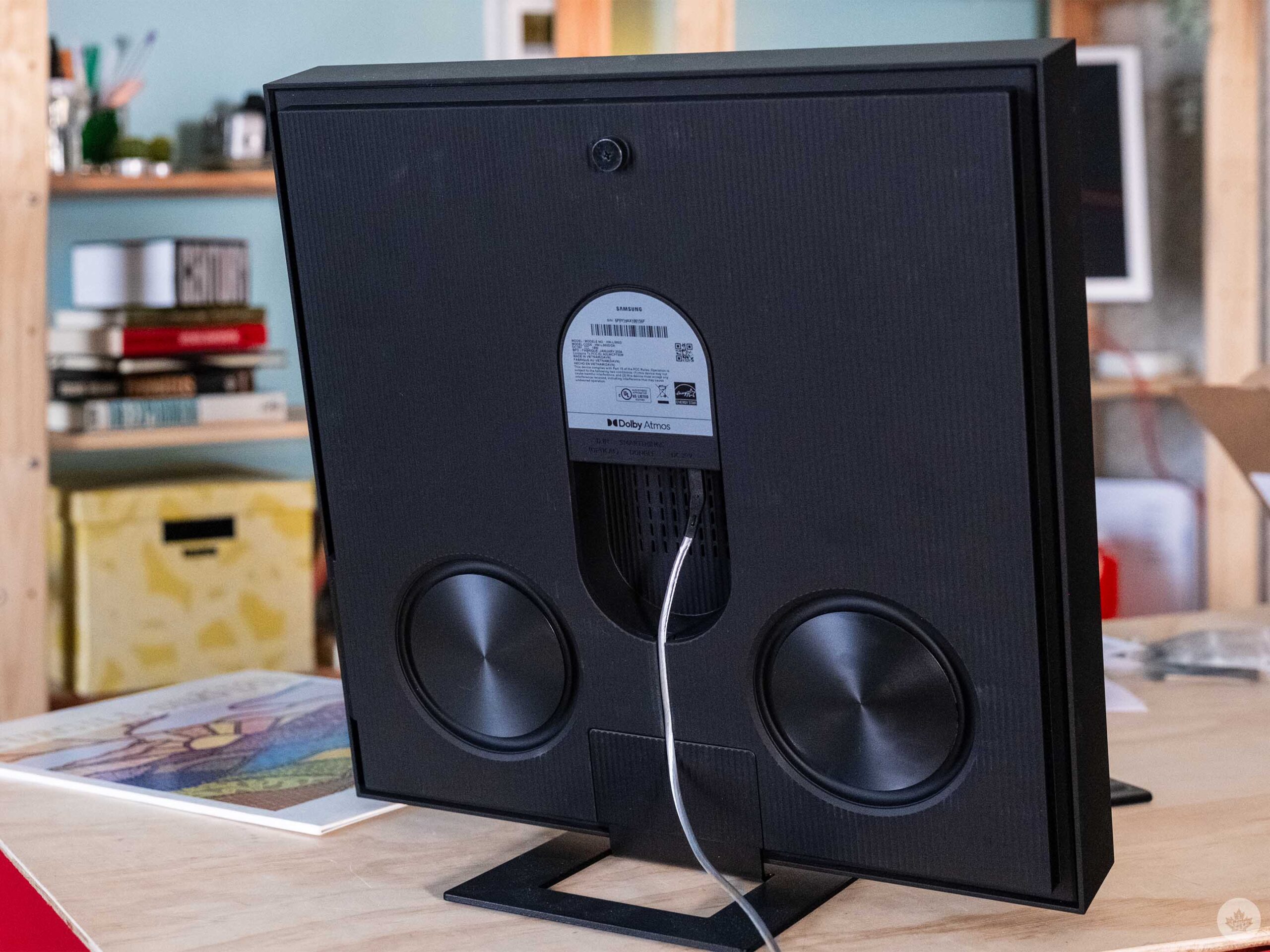 The one area the Music Frame excels at is sound quality. It’s very clear and holds up even at loud volumes. A software feature also adjusts the speaker’s output to ensure it provides the best sound quality for its space. This is more common in smart speakers now, but it’s nice to see here. In practice, no matter where I moved the Music Frame, it always sounded great and had no problem filling the room with sound.
The one area the Music Frame excels at is sound quality. It’s very clear and holds up even at loud volumes. A software feature also adjusts the speaker’s output to ensure it provides the best sound quality for its space. This is more common in smart speakers now, but it’s nice to see here. In practice, no matter where I moved the Music Frame, it always sounded great and had no problem filling the room with sound.
The Music Frame also joins the exclusive club of Atmos-equipped speakers, which can play back music recorded in Spatial Audio. The Atmos recordings sound slightly fuller and have a bit more height, but the effect isn’t as strong as it would be with headphones on, or in a real surround sound setup. It’s also worth pointing out that Atmos speakers from Apple, Sonos and Amazon are all cheaper than the Music Frame. You’ll also need a Tidal or Apple Music subscription to use this format.
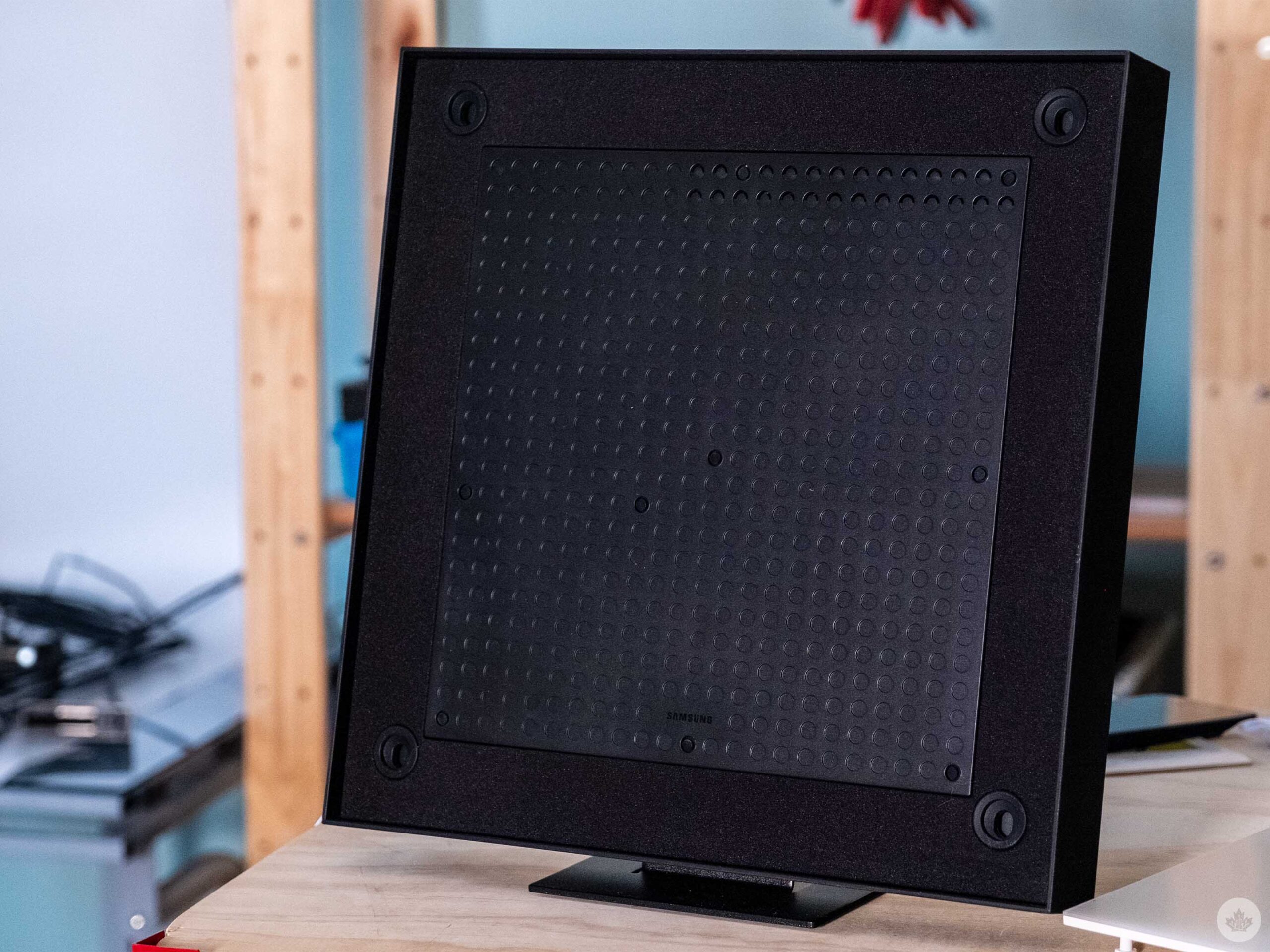
As a speaker, it works fine, but the volume controls via Spotify Connect (which I used the most) are poorly implemented. Five clicks up from the bottom is too loud, while four clicks is too quiet. This means that to dial in the volume, I needed to open the Samsung Smart Things app pretty much every time I use the speaker. I could use the physical buttons on the unit, but those are tucked behind the edge of the frame, so there’s no way of hitting them without memorizing their placement. Since I mostly control the volume via software, that never happened for me. Therefore, whenever I had to adjust the volume manually, I needed to pull the frame away from the wall and stick my head behind it. The buttons are also capacitive and small, so it’s hard to tell them apart by touch.
There are some visuals in the form of four LED lights on the front that will flash when you’re controlling the volume. But since they’re tucked under the edge of the art print, it’s pretty hard to see them when standing in front of the speaker if it’s on a table or mantle. You can see them when it’s wall-mounted or from across the room, but up close, their placement makes them basically invisible.
There is a single optical audio input on the rear of the speaker near the power input, but it would have been nice to have a regular AUX jack for quick setup with modern record players and other music sources that might not be high-end enough for optical connections.
